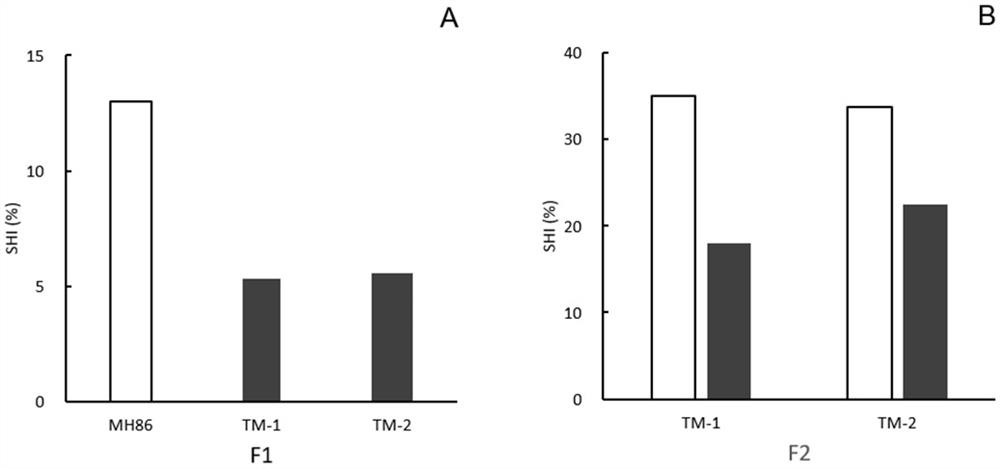use sh4 Method for gene silencing to reduce seed shattering of hybrid offspring of cultivated rice and weedy rice
A technology for gene silencing and rice cultivation, applied in genetic engineering, plant genetic improvement, chemical instruments and methods, etc., can solve problems such as inability to harvest, difficult to control weeds, environmental biosafety problems, etc., and achieve the goal of controlling the spread of weedy rice. Effect
- Summary
- Abstract
- Description
- Claims
- Application Information
AI Technical Summary
Problems solved by technology
Method used
Image
Examples
Embodiment Construction
[0066] Using the method of the present invention, the SH4 Gene silencing technology to reduce seed shattering of hybrid offspring of cultivated rice and weedy rice: The experiment was conducted from March 2012 to November 2015 in the laboratory and experimental field of the Institute of Biotechnology, Fujian Academy of Agricultural Sciences. The cultivation of the experiment The rice variety is Minghui-86 (MH86), and the weedy rice is Wd1292.
[0067] Specific experimental design and methods:
[0068] (1) Synthesis SH4 Gene silencing elements:
[0069] (1) The method of synthesizing the artificial microRNA gene silencing element is: on the Web MicroRNA Designer (WMD) online tool platform (http: / / wmd3.weigelworld.org) to cultivate rice shattering geneSH4 The genome sequence (LOC_Os04g57530.1, TIGR cultivated rice whole genome annotation database) was used as the target sequence, and a gene capable of silencing SH4 The most suitable artificial microRNA fragment of the gene, t...
PUM
 Login to View More
Login to View More Abstract
Description
Claims
Application Information
 Login to View More
Login to View More - R&D
- Intellectual Property
- Life Sciences
- Materials
- Tech Scout
- Unparalleled Data Quality
- Higher Quality Content
- 60% Fewer Hallucinations
Browse by: Latest US Patents, China's latest patents, Technical Efficacy Thesaurus, Application Domain, Technology Topic, Popular Technical Reports.
© 2025 PatSnap. All rights reserved.Legal|Privacy policy|Modern Slavery Act Transparency Statement|Sitemap|About US| Contact US: help@patsnap.com



